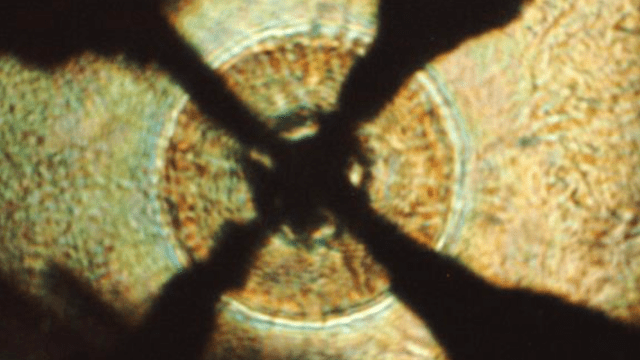A team of physicists has published peer-reviewed results documenting near-room-temperature superconductivity in the hydrogen-rich compound lanthanum hydride.
Researchers around the world are racing to produce a material that, at room temperature, conducts electricity without losing energy to resistance. (You can read about this fascinating effort and its history here.)
Most recently, scientists have focused their attention on a substance called lanthanum hydride, which is compressed between diamonds to pressures similar to those found in Earth’s core. This new paper sets the temperature-to-beat at -23 Celsius or -9.67 Fahrenheit—technically room temperature, if you were to open the window during polar vortex conditions in the Midwest.
Physicist Heike Kamerlingh Onnes discovered superconductivity in 1911 in the element mercury held at nearly absolute zero. Since then, scientists have worked to increase the temperature at which materials turn into superconductors, since these materials could transfer electricity more cheaply and have important uses in the medical and quantum computing fields.
The search now includes the field of physicists attempting reveal new properties of hydrogen or molecules containing mostly hydrogen, called hydrides, squeezed between diamonds to high pressures.
The team, led by physicist Mikhail Eremets from the Max Planck Institute for Chemistry, kicked off the most recent race for a high-temperature superconducting hydride in 2015, when they published a paper announcing the discovery of superconductivity at -70 Celsius.
In this most recent paper, the researchers placed a piece of lanthanum into an insulating ring, then placed it into a box full of pressurised hydrogen gas. They clamped the gasket between a pair of diamonds, and continued squeezing the diamonds until they hit the desired pressures, nearly 2 million times the pressure on the surface of Earth. Then, they hit the sample with a laser to form the lanthanum hydride. Finally, they take measurements to confirm they really created the material and that it’s really a superconductor.
The researchers detail two measurements in the paper: In one, they measure the resistance drop to zero at the -23 Celsius temperature. In another, they notice that this temperature decreases in the presence of a magnetic field—a clue that they were actually measuring the sample rather than something being wrong with their experimental setup.
This paper first came out in December, and we included it in our deep dive into the subject. But now it appears in a peer-reviewed journal, solidifying the results as the number-to-beat for those hunting for high-temperature superconductors (the work is considered “high temperature” even though the experiments are held at wintery conditions).
These papers are milestones for more than just the warm temperature, though. In the past, discovering new superconductors has required luck, since the temperatures at which things turn into superconductors are hard to predict. But more recent discoveries of high-temperature superconductors have been guided by theory.
“These remarkable successes for theory seem to be driven by innovative computational methods that were enabled by advances in computing power,” James Hamlin, physicist at the University of Florida who reviewed the paper, wrote in a Nature perspective.
There is a ton more work to do. Superconductors don’t allow magnetic fields to pass through them, a phenomenon called the Meissner effect. Scientists haven’t measured this effect in lanthanum hydride yet. And there are other teams around the world working to find materials that turn into superconductors at even higher temperatures or lower pressures, which would make them practical to use in modern technology.
As of today, though, it seems that scientists have a pretty firm foundation to build upon.
